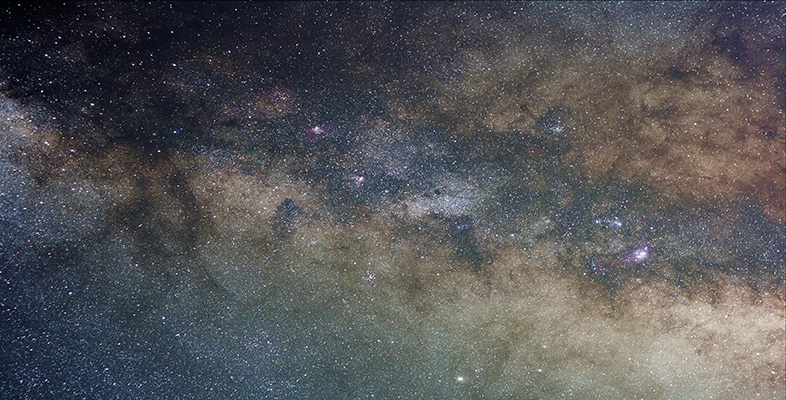6.2 Do supermassive black holes really exist?
One outstanding feature of the black-hole model is that the black hole must be supermassive. Can one at least detect the presence of a massive central object?
How might a massive central object be detected using information from galactic rotation curves?
By measuring rotation speeds near the nucleus of the galaxy. The faster the rotation speeds, the greater the enclosed mass.
So the answer is yes. In NGC 4151, a prominent type 1 Seyfert galaxy, the broad lines are observed to vary as well as the continuous spectrum. The line variations lag about 10 days behind associated variations in the continuous spectrum. The usual interpretation is that the variations commence in the engine, where the continuous spectrum originates, then take 10 days to 'light up' the broad-line region. So the broad-line region must be a distance r of about 10 light-days from the engine. Supposing that the broad lines are Doppler-broadened by rotation around the engine, then one has a picture of regions of gas moving at a speed ν of about 7000 km s−1 around a central engine of mass M at a radius r. The value of M can now be calculated from ν and r. Using the following equation

with r = 10 light-days (3 × 1014 m), and v = 7 × 106 m s−1, and converting into solar masses, we obtain M = 108M⊙. This is consistent with the value of M for an accreting black hole calculated from consideration of the Eddington limit.
This approach has been very productive. One of the most studied active galaxies is the radio galaxy M87 which you have seen in Figure 24. Since the late 1970s astronomers have suspected it contains a supermassive black hole and the most recent observations with the Hubble Space Telescope reveal a rotating disc of gas only 16 pc from the centre. If the equation above applies, then the mass of the central object is around 3 × 109M⊙.
In the mid-1990s it became possible to probe even closer to the centre of an AGN. Measurements of rotating gas within 0.18pc of the core of NGC 4258, a weak Seyfert galaxy, showed that an object of around 4 × 107M⊙ must be at the centre. Similar measurements have been made of other active galaxies.
Another intriguing observation comes from the Seyfert galaxy MCG-6-30-15, whose variability was illustrated in Figure 27. Its X-ray spectrum shows an extremely broad emission line, 100 000 km s−1, which is believed to come from the accretion disc itself. The line is greatly distorted as if it originated in the intense gravitational field near a black hole, but it has not yet been possible to derive the mass of the black hole.
You have now heard some of the evidence that accreting massive black holes really do provide the engine power for AGNs. Do you think it is convincing?
If not, the alternatives are not very promising. The only other idea still in the running is a 'nuclear starburst' model, a cluster of young, massive stars with frequent supernova explosions, but this does not fit the observations so well. It remains interesting because of its similarity to the processes occurring in starburst galaxies. If a supermassive black hole is the leading contender, it is because no-one has yet thought of anything better.
Question 14
How convincing is the scientific evidence for: (a) the existence of accreting massive black holes in AGNs; (b) the occurrence of nuclear fusion in the Sun and other stars; (c) the laws governing the orbits of the planets around the Sun?
Answer
(a) An accreting massive black hole is a hypothesis that has been thought up to account for AGNs. There is really no conclusive evidence to support the hypothesis. However, no-one has a better idea of how to produce enough power for an AGN in the small volume.
(b) The occurrence of nuclear fusion in the Sun was originally a hypothesis proposed to explain the Sun's energy source. The whole theory of the structure and evolution of stars of different mass and different composition has been based on the nuclear fusion idea. The agreement of this theory with observations is strong confirmation that the nuclear fusion idea is correct.
(c) The laws governing the motion of the planets round the Sun account for all planetary motions ever observed and allow future motions to be predicted. This is the strongest evidence for their correctness. It could even be said that people have conducted experiments by launching spacecraft that are found to move according to these same laws.
